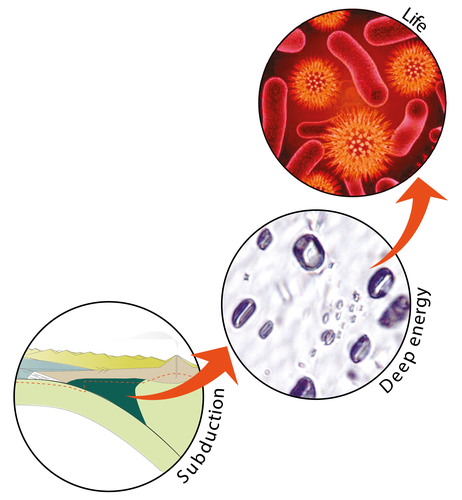
The deep subsurface biosphere is the largest microbiological habitat on Earth, with biomass and contribution to biogeochemical cycles comparable to surface biosphere. Deciphering the parameters that control and sustain deep subsurface life is vital in understanding the functioning of our planet, and additionally provides key information on how life emerged and where it could exist elsewhere. Among these parameters are the sources of essential energy for deep life, such as H2 and CH4. Great effort has been made to identify geological processes producing these compounds within the subsurface biosphere. Conversely, the identification of deeper sources of H2 and CH4 produced outside the parameter space for life is lacking, even though they could dramatically change our understanding of the distribution and magnitude of deep life on Earth and potentially beyond.
Convergent margins focus the largest recycling of C from the deep Earth to the biosphere and atmosphere. Current models of deep C cycling do not include H2-CH4 deep fluxes and therefore cannot assess their potential role in sustaining deep life. My recent work indicates that H2 and CH4 can be produced in large amounts abiotically in subduction zones well below the biosphere by high-P serpentinization processes. This opens new fundamental questions: What is the magnitude of deep H2 and CH4 at convergent margins? How do they affect deep C cycling? To what extent deep H2 and CH4 fluxes sustain the biosphere?
DeepSeep will answer these questions by providing the first ever estimates of deep H2-CH4 fluxes, as well as the missing means to detect source areas at depth, and will establish deep H2-CH4 role on deep C cycling and on deep biosphere processes. By bridging the two most striking peculiarities of Earth, subduction and life, DeepSeep has the potential for transformative discoveries, with long-term implications for global C cycle modeling, climatology, and the emergence and search for life on Earth and beyond.